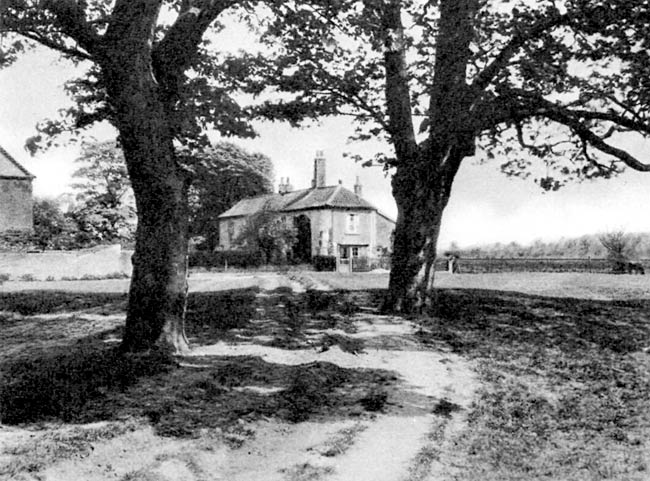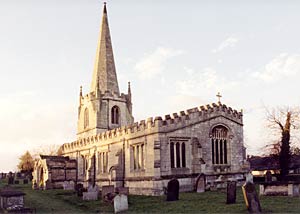< Previous | Contents | Next >
The Village that Launched the Mayflower
SCROOBY. All the world has heard of Scrooby, for it launched the Mayflower, though its little river is far from the sea. It was the home of William Brewster and the meeting-place of the old Fathers of New England.

Scrooby Manor House in the 1930s.
It lies by the Great North Road, bounded by the River Ryton, which leaves the mill wheels quiet now, a happy hunting-ground for the children who play in the old mill race. On its way from the mill to the Idle the stream flows by the manor farm, known as Brewster's House, standing at the side of a hummocky field in which once stood a fine manor house of the Archbishops of York. The greatness that came to Scrooby, from early in the 13th century till its decline after four centuries, was enough to make it famous if the Pilgrim Fathers had never been, for it was the scene of much magnificence.
Here were seen the retinues of many a knight and squire. Margaret Tudor called here on her way to Scotland to be made a queen. Here Henry the Eighth held a Privy Council, and Cardinal Wolsey spent some months here on his last sad journey north. Archbishop Sandys, friend of Lady Jane Grey, often stayed here till his death in Armada year. The story of the Brewsters belongs to about this time; and so does the beginning of the end of the so-called Archbishop's Palace.
In its decline part of the old house or its outbuildings was used as a post-house and inn, and Willam Brewster the elder filled the important office of Post. His son William, who was to sail in the Mayflower, carried on the business.
There is very little in the village that can be identified with him. It is thought he may have lived in what is now the manor farmhouse, which has been built at different times and has remains perhaps of his day in a lofty arch in an outside wall, some stone window frames, old roof beams in an outbuilding, and an old dovecot. A tablet on the house says it marks the site where Brewster lived from 1588 till 1608, and where he originated the Pilgrim Church of which he became Ruling Elder.
Some think he lived at the old inn in the village street, now a dingy block of cottage and reading-room with what was the old smithy between them; and the old cottage by the churchyard actually has an inscription saying that he lived there as Post to Queen Elizabeth and James the First. It is all very uncertain.

Scrooby church in 2001.
But we know that his house, wherever it was, was a meeting-place for the Brownists or Separatists. We know that he worshipped in Scrooby church, as did others who became Pilgrim Fathers; and we know that what is called Brewster's Pew was certainly, in one form or another, part of the church furnishing in his day. The handsome bands of vine and grape which make the back of the pew, and other pieces in two charming little chancel seats, were part of the chancel screen of about 1500. The pew has a massive 15th century traceried bench-end, and the two chancel seats have smaller old ends in similar style.
The font he knew has been sold to America, and the old stocks have gone there too. A floorstone to Penelope Sandys recalls the Archbishop whom Brewster would know in his younger days, and his son, Sir Edwin Sandys, who became Governor of Virginia and granted the Pilgrim Fathers the tract of land on which they settled.
The church itself, set in a churchyard of beautiful lawn, was made new in 1390 and much modernised last century. Adorned with fine battlements, it has some Tudor windows, a 14th century porch with a stone roof, and a 14th century nave arcade. A massive spire twice struck by lightning rests on a lovely old tower of rare design, its four angles chamfered near the top to make it eight-sided below its crown of battlements and four lofty pinnacles. Two fine pinnacles on the chancel have tiny heads at their base.
